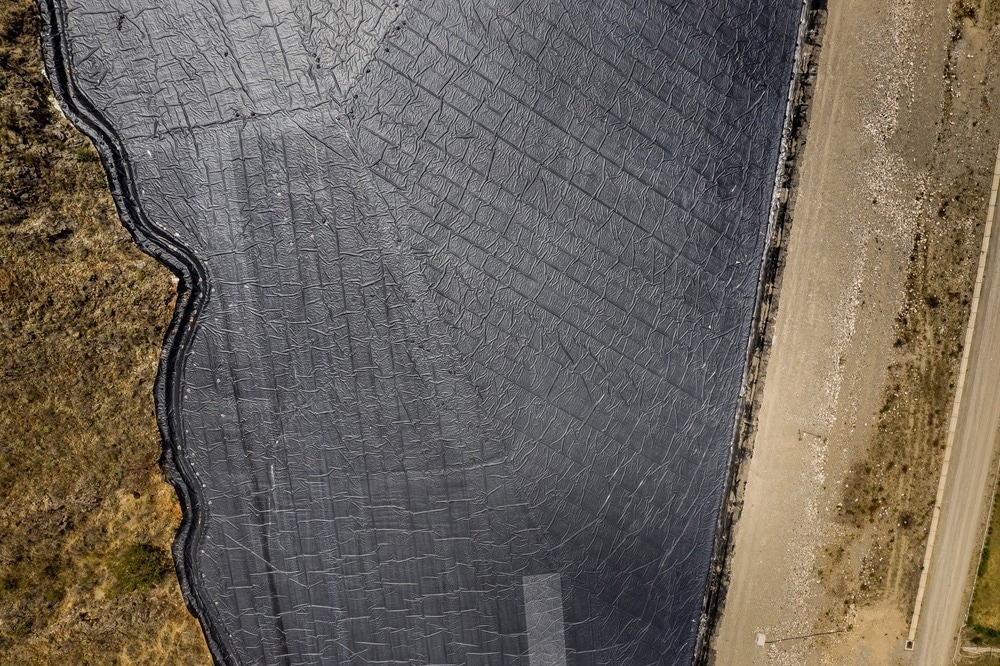In a recent article published in Minerals, researchers from China and Saudi Arabia present an approach to enhance the hydrophobic properties of mining solid waste backfill material to mitigate corrosion weakening caused by mine water. The research aims to develop a novel hydrophobic solid waste backfill material by incorporating polydimethylsiloxane (PDMS) and a silane coupling agent (SCA) as hydrophobic modification additives. This innovative approach seeks to improve the durability and performance of backfill materials in underground construction.

Image Credit: Christian Vinces/Shutterstock.com
Background
Utilizing coal mine solid waste for backfill materials is crucial to address environmental pollution and optimize resource utilization.
Previous research has highlighted the importance of controlling the proportion of fly ash, cement, and soft soil to enhance material strength. The study builds upon existing knowledge by investigating the influence of different fly ash–slag ratios on the hydrophobic solid waste backfill material.
The researchers aim to improve the material's resistance to water infiltration and corrosion by incorporating PDMS and SCA.
The Current Study
The experimental methodology employed in this study aimed to develop a hydrophobic solid waste backfill material by incorporating PDMS and SCA as hydrophobic modification additives. The preparation process involved several vital steps to ensure the effective integration of these additives into the backfill material.
Initially, various mixtures of fly ash and slag were formulated at predetermined concentrations of alkali activators, namely sodium silicate (SS) and sodium hydroxide (SH), to create the base composition for the backfill material. The dry components of fly ash and slag were thoroughly mixed to achieve a homogenous blend before further treatment.
Subsequently, a solution containing 10 wt% SS and 5 wt% SH was prepared by dissolving these alkali activators in tap water and subjecting the mixture to mechanical stirring at 500 rpm for 10 minutes at room temperature. This solution served as the activating agent for the fly ash–slag mixture, facilitating the initial bonding and hydration processes.
Simultaneously, the hydrophobic agents PDMS and SCA were incorporated into the backfill material to enhance its resistance to water infiltration and corrosion. The PDMS base solution and curing agent were mixed at a specific ratio, followed by the addition of 2% SCA based on the mass of PDMS. This mixture underwent thorough mixing and reaction at 500 rpm for three minutes at room temperature to ensure proper dispersion and bonding of the hydrophobic agents.
The resulting hydrophobic solution, containing PDMS and SCA, was then added to the mortar mixture and stirred at 1000 rpm for five minutes to achieve uniform distribution and integration of the hydrophobic additives. This step was crucial in ensuring that the backfill material exhibited consistent hydrophobic properties and enhanced durability.
Results and Discussion
The study's experimental results revealed significant advancements in developing the hydrophobic solid waste backfill material. Incorporating PDMS and SCA as hydrophobic modification additives demonstrated notable improvements in the material's mechanical performance and hydrophobic characteristics.
The backfill material treated with PDMS and SCA exhibited enhanced resistance to water infiltration, as indicated by an increase in the water contact angle up to 134.9°. This substantial improvement in hydrophobicity is crucial for underground construction applications, where water seepage can lead to corrosion weakening and structural instability.
Morphological analyses, including scanning electron microscopy (SEM), X-Ray diffraction (XRD), and Fourier-transform infrared spectroscopy (FTIR), provided valuable insights into the mechanisms underlying the hydrophobic modification of the backfill material. The observations indicated that PDMS predominantly adhered to the surface of inorganic particles through the bridging action of SCA, forming a protective layer that enhanced the material's hydrophobic properties.
Furthermore, optimizing fly ash–slag ratios in the backfill material significantly influenced its mechanical strength. By increasing the slag content from 20% to 50%, the material's overall strength was enhanced by up to 98%. This improvement can be attributed to the hydration of slag, which contributes to the formation of C-S(A)-H gel and enhances the material's structural integrity.
The combination of superior mechanical performance, enhanced hydrophobicity, and optimized composition highlights the potential of the developed hydrophobic solid waste backfill material for sustainable underground construction practices.
Conclusion
The research team successfully developed a novel hydrophobic solid waste backfill material by incorporating PDMS and SCA additives. The material showed promising mechanical performance and hydrophobic characteristics, making it a viable solution for addressing corrosion weakening in underground construction.
The study's findings contribute to the advancement of sustainable backfill materials and highlight the potential for utilizing mining solid waste in an environmentally friendly manner.
Source:
Zhao Z, Ma L, et al. (2024). Experimental Investigation on Hydrophobic Alteration of Mining Solid Waste Backfill Material. Minerals, 14, 580. https://doi.org/10.3390/min14060580